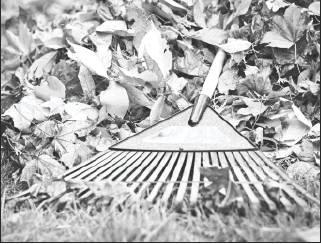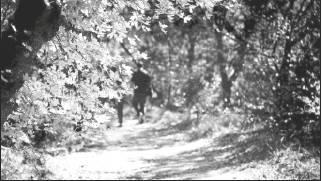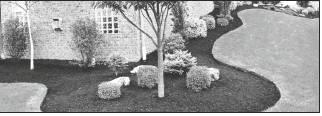Drippin’ Gardening
Fall is here and that means that our trees will soon be dropping their leaves. Trees are some of the most amazing things in nature, they were among the first solar collectors ever created, they take up moisture and nutrients with their roots passing them up along the length of the trunk, right up to the canopy. The leaves that contain these nutrients are then supercharged by photosynthesis doubling the nutrient content! Then, when fall arrives, Mother Nature has the trees drop their leaves right at our feet as if to say, “Look at this! Free soil amendments here!”
In many American homes though, this means it is time to get out the leaf blower and blow the leaves away – usually right into our neighbor’s yard, who will soon blow them back to us. And this silly process continues until one of us goes to the store and buys the proper bags to put the leaves in so that we can place them at the curb to be hauled off to parts unknown. The really crazy thing is that most of us will go to the same stores later in the year to buy compost and fertilizer for our yards and gardens never suspecting that the leaves we sent away were right there, ready to provide what is among the best possible amendment you can add to your soil. And it was there FREE for the taking!
The longer I garden, the greater my appreciation for the value of organic matter. And one of the very best sources of organic matter is autumn leaves. As I mentioned above, the leaves are packed with trace minerals that trees draw up from deep in the soil. When added to your garden, leaves feed earthworms and beneficial microbes. They lighten heavy soils and help sandy soils retain moisture. They make an attractive mulch in the flower garden. They're a fabulous source of carbon to balance the nitrogen in your compost pile. And they insulate tender plants from cold while helping to retain moisture the plants need.
Here are a few easy ways that I've found to put leaves to work in my garden. First off, shred up as many of them as you can. I don't have a leaf shredder, though I'm considering purchasing one. Instead, I let the leaves pile up on the lawn and then run over them a few times with the lawn mower. Shredding one leaf into five or ten smaller pieces does several good things. It increases the surface area, giving microbes many more places to work. It prevents the leaves from packing together into layers that could act as a mat not allowing water or air to penetrate. And it reduces the volume dramatically.
Now, once my leaves are shredded, I rake them up. Most of them go into plastic trash bags that get stashed in the barn for next spring when I'll use them as mulch in my perennial gardens. In time, shredded leaves become something called leaf mold, which makes a fabulous mulch. What's more, it does wonders for the soil!
As for the rest of the shredded leaves, some get put aside for a month or so to be used for mulching my front yard beds. The rest get carted over to my vegetable and cutting gardens.
The beds in these two gardens are permanent, so it's easy to focus all my soil-building energy right in the growing zone. As the beds get cleaned out, I cover the soil with a layer of shredded leaves and fork that in a bit. On top goes about an eighth of an inch compost and by spring it's all a crumbly mix that plants would be crazy not to love.
Not all the leaves in my yard get shredded, though if I had the time I'd probably do so. By the end of December, I've usually run out of steam and simply pack the rest of the whole leaves into my compost bin. I add these leaves to the working compost pile throughout the year to balance the food scraps and other materials that are usually high nitrogen. The leaves also keep the pile from getting compacted and soggy.
For me, keeping busy is the best way to fend off the blues, which is how I sometimes feel as autumn gets into full swing, it could just be due to the increase in rainy days, too. Raking and hauling and digging and spreading keep me moving and my gardens just get better and easier to care for every year.
So, I am sure you are wondering, now that I have the shredded leaves, how do I us them? Good question. May I suggest:
• Insulate Tender Plants: A 6-inch blanket of leaves protects tender plants from winter wind and cold. Cover coldhardy vegetables—such as carrots, kale, leeks and beets—and you'll be able to harvest them all winter.
• Boost Your Compost Pile: Carbon-rich leaves balance high-nitrogen compost ingredients such as fresh grass clippings and kitchen scraps.
• Improve Your Soil: Mix shredded leaves right into your garden. Next spring, your soil will be teeming with earthworms and other beneficial organisms.
• Make "Leaf Mold": Simply rake the leaves into a big pile. If you shred them, they will decompose faster, but you can still make leaf mold without shredding. After one to three years, fungus will have broken the leaves down to a special compost that smells like a walk through the woods. Leaf mold is high in calcium and magnesium and retains three to five times its weight in water—rivaling peat moss.
Making leaf mold is easy. In fact, fall leaves will create leaf mold (which is simply a compost made entirely from leaves) all by themselves – if they didn’t our planet would be miles deep in fall leaves! Leaf compost, as I prefer to call it, is an easy 4 step process:
1. You rake your leaves into a pile and hope that the wind doesn’t blow it away. However, I find that constructing a cylindrical bin out of chicken wire is easy to do and ensures the leaves won’t blow away.
2. Rake the leaves and shred. The benefit to shredding the leaves is that the smaller pieces will decompose faster. However, if you don’t have a mower to shred them, it isn’t absolutely necessary.
3. Put the leaves in the bin. The wetter they are the better. Be careful not to overstuff your bin because you want to allow air to circulate too.
4. Wait patiently until the spring. Turn the pile once about three weeks before you plan to use it and then just spread it on your vegetable and flower gardens.
You can also use this as a leaf mulch. Like leaf compost, leaf mulch helps to maintain soil moisture. It also improves soil fertility, inhibits weed growth, and keeps soil warmer in winter and cooler in summer.
Apply a 2-3-inch layer around trees, shrubs, and perennial gardens. When placing them around a tree don’t mound them all at the base of the tree. Instead, bring the mulch all the way out to the tree’s drip line to ensure that its whole root system benefits.
Some folks don’t care for the look of leaf mulch; they prefer the look of wood chips or bark mulch. Perhaps, but I don’t know of anyone that doesn’t love the benefits the leaves bring to the garden! So, this fall, instead of bagging up and shipping off your leaves, feed them to your garden and watch how happy it makes your plants!






